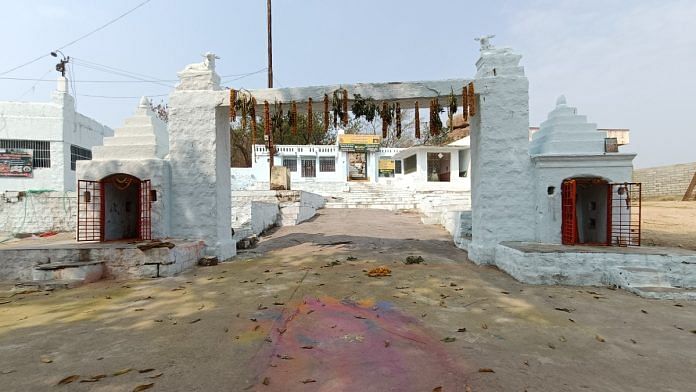Manchirevula, Telangana: Gunfire interspersed with temple bells in the morning air as unmindful devotees went about their prayers at the Sri Veerabhadra Swamy shrine near Hyderabad. The shrine, said to be centuries-old, sits on a hillock, about 10 km from the hustle and bustle of Telangana’s IT hub Cyberabad.
The Madapathis, who identify as a family of “Lingayat Brahmins”, are the hereditary priests and custodians of the Sri Veerabhadra Swamy shrine, also known as the Machileshwarnath temple. For them, the gunfire at the Greyhounds training centre next door seems to be the least of their worries.
Madapathis accuse the Greyhounds — elite anti-Maoist combat unit of the Telangana Police — of trying to dispossess them of land and the state government of divesting them of their fundamental rights and livelihood by arbitrarily taking over management of the shrine.
Given the tussle between the state and Madapathis, the shrine is now at the centre of a fast-moving row over the state’s control of Hindu places of worship, particularly temples in southern India.
The Machileshwarnath temple complex stretches across a six-acre plot, with the main deities — Machileshwarnath, Veerabhadra — housed in a cave.
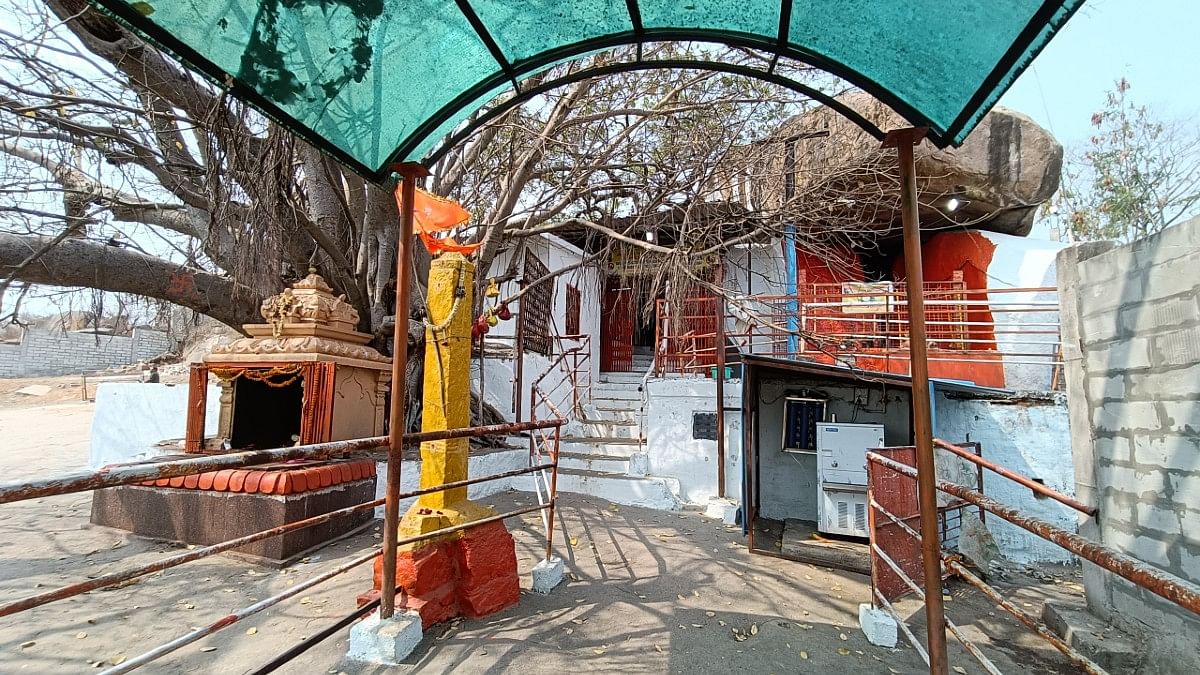
Also on the premises is a temple dedicated to Sai Baba and another to ‘Santoshi Mata’ built a few years ago and still awaiting inauguration. Besides, the premises also house a gaushala (cow shed) and priests’ accommodations, enclosed entirely by a 10-ft wall which the Madapathis allege was built illegally by the Greyhounds.
Manchirevula, where the temple complex is located, has over the last few years emerged as prime real estate with high rises and luxurious villas in the vicinity. The estimated market value of one acre here is about Rs 35 crore.
A flight of steps from an olden arcade leads to the main shrine. It was only last year that municipal authorities laid a concrete road to ensure vehicular access to the little-known Shaivite shrine that attracts a steady flow of about 100-200 devotees on any given day, many of them locals from nearby Manchirevula village. This number, says Madapathi Paramesh (30), one of the priests, swells up to a lakh on Shivaratri.
Paramesh is the youngest of 11 petitioners from the Madapathi family who have challenged the constitutional validity of the Telangana Charitable and Hindu Religious Institutions and Endowments Act, 1987. Petitioners have also sought that “impugned orders” (issued under the act) of the state endowments department taking control of the temple be set aside.
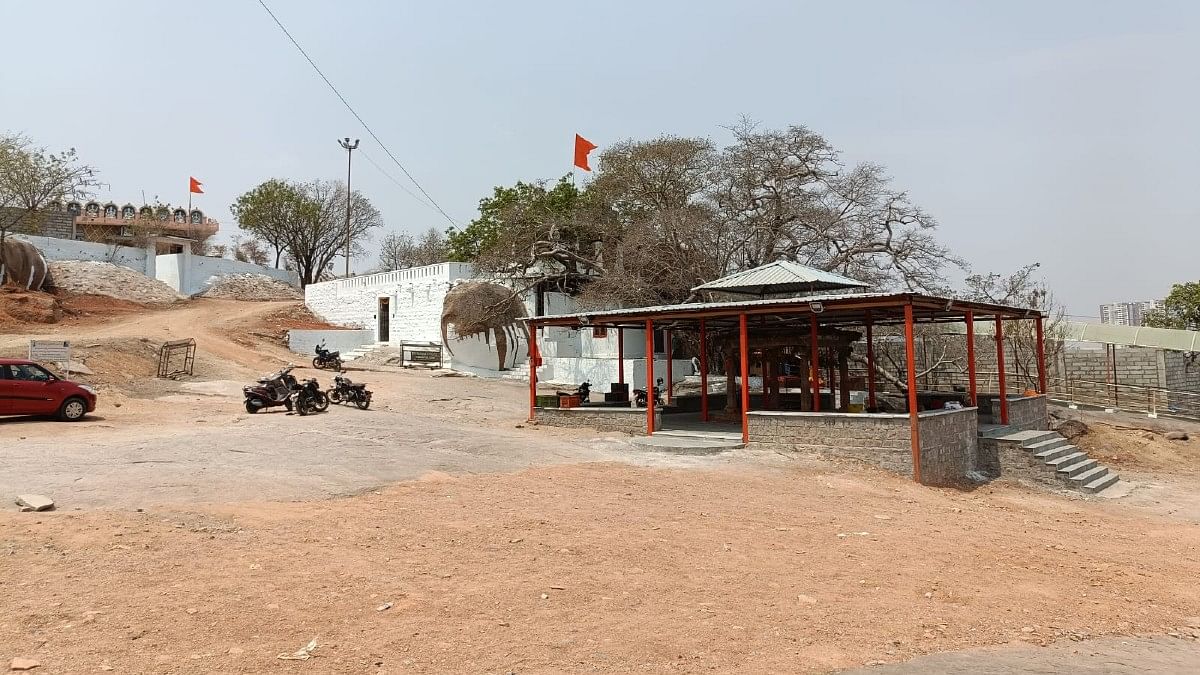
Earlier this month, a bench of the Supreme Court, having heard the writ petition, served a notice to the Telangana government seeking a response while ordering that status quo be maintained at the temple.
Asked to comment, a senior official of the Telangana endowments department says they will review the court order and respond accordingly.
Madapathi family patriarch Nagendrappa (76) tells ThePrint that his ancestors “fostered the deity, developed the temple from scratch, and now the government is attempting to take it over indiscriminately”.
“My father, grandfather and his predecessors were all dedicated to this ancient temple service. There was a time when we struggled to even light an oil lamp in front of the deity; we used to carry buckets of water from the stream below. The sanctum sanctorum’s mud walls were replaced by granite and concrete, under me. After all these untiring efforts in preserving the holy place and propagating Sanatana Dharma, we are facing eviction from our temple,” says Nagendrappa, who is also petitioner No. 1 in the writ petition.
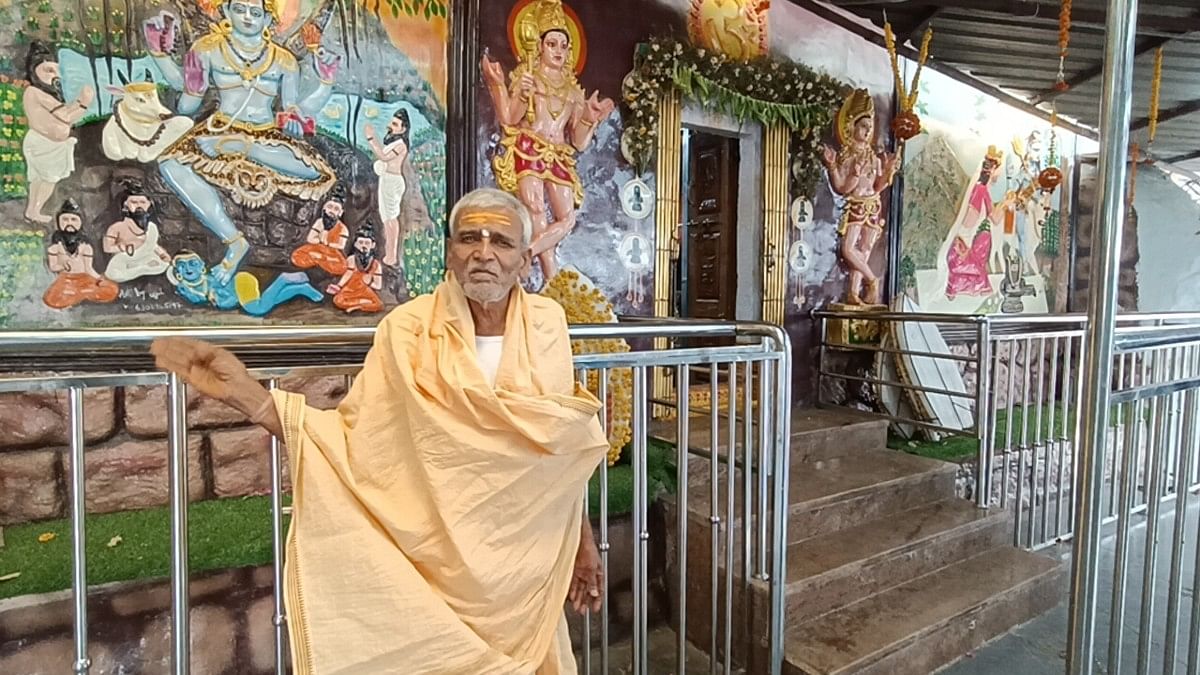
While the Veerabhadra idol in the sanctum sanctorum is svayambhu (self-manifested), the revered shiva lingam besides it was installed, Paramesh says while also performing abhishekam (ablution).
Paramesh claims the temple and surrounding land has been under the family’s supervision for at least eight generations or nearly 200 years now. “Our family members have been continuing as hereditary priests and de facto trustees since,” he says.
However, in the writ petition before the apex court, the Madapathis submitted that members of their family have been the officiating priests while also managing the affairs of the shrine for the past 400 years, leaving them in continuous possession of the property all this time.
Also Read: Who should run Hindu temples? Tamil Nadu is the epicentre in new tug-of-war
‘Not a party’: Greyhounds
A training centre for the Greyhounds was set up near the temple complex in the 1990s.
Raised by IPS officer late K.S. Vyas in 1989, the Greyhounds are a nationally acclaimed elite commando unit raised to neutralise the menace of Left Wing Extremism (LWE) in united Andhra Pradesh. A road alongside the temple complex is named after Vyas, who was assassinated by Naxalites while out for a jog in January 1993.
The government of united Andhra Pradesh had then allotted more than 142 acres of land at Manchirevula, including the temple complex’s six acres, to the Greyhounds.
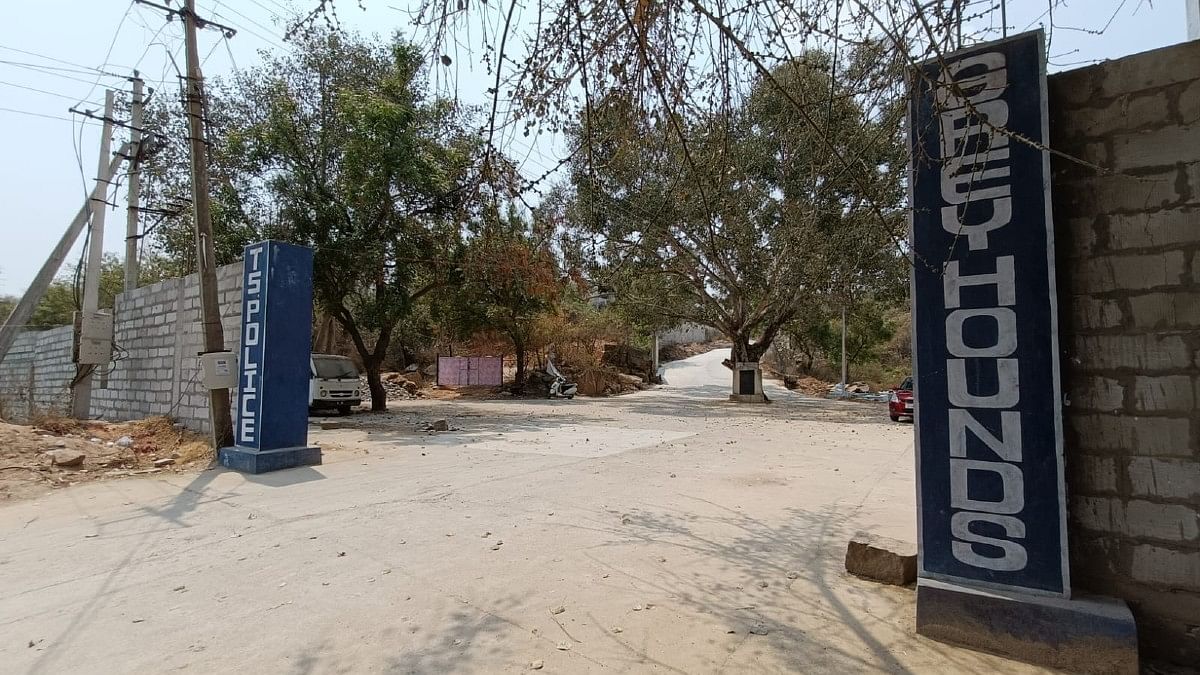
“However, trouble began 10-12 years back with the Greyhounds objecting to some structures,” says Nagendrappa.
Madapathis accuse the state police of “constant interference” in temple affairs.
“Because of this land dispute with the Greyhounds, the opening of the Santoshi Mata temple has been pending for 4-5 years now. We are even forbidden from making any alterations to our houses,” says Paramesh.
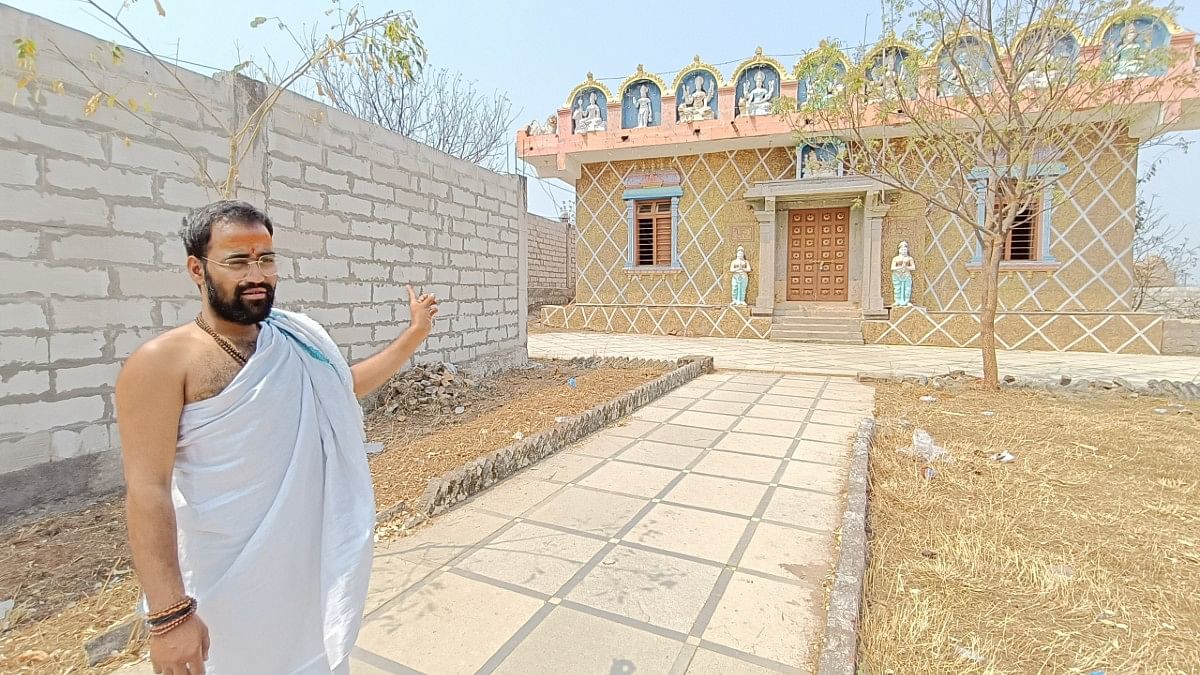
With the ancient temple in the middle, the temple dedicated to ‘Santoshi Mata’ is at the periphery of the six-acre complex, abutting a boundary and gate of the Greyhounds training centre.
Though the compound wall of the training centre encloses the temple complex, there is no restriction on the movement of devotees into and within the premises.
Telangana police officials deny interfering in the affairs of the temple, adding that they are not a party in the legal dispute.
“The present dispute is between the priests and the state government; we are not a party in the case before the Supreme Court. An area of 143 acres, including the six-acre temple complex, was earlier allocated to us. We will function as per the government orders,” Vijay Kumar, Additional Director General of Police (Operations) and chief of the Greyhounds, tells ThePrint.
What is the dispute in court
Paramesh says a team from the endowments department inspected the premises on 1 February this year, making a note of the structures and the property within, including the number of fans, tubelights, etc.
They even tried to take control of the premises, he alleges.
This action, the family pointed out in its writ petition filed before the Supreme Court last month, followed an order by the endowments department appointing an executive officer for management of the temple.
“The self-styled managing authorities are not maintaining records of the temple and are interrupting departmental authorities from protecting the (valuable) endowed properties,” V. Anil Kumar, Commissioner, Endowments, said in the order dated 29 December, 2023.
The order went further to appoint an executive officer to the temple “to streamline administration and avoid public criticism”.
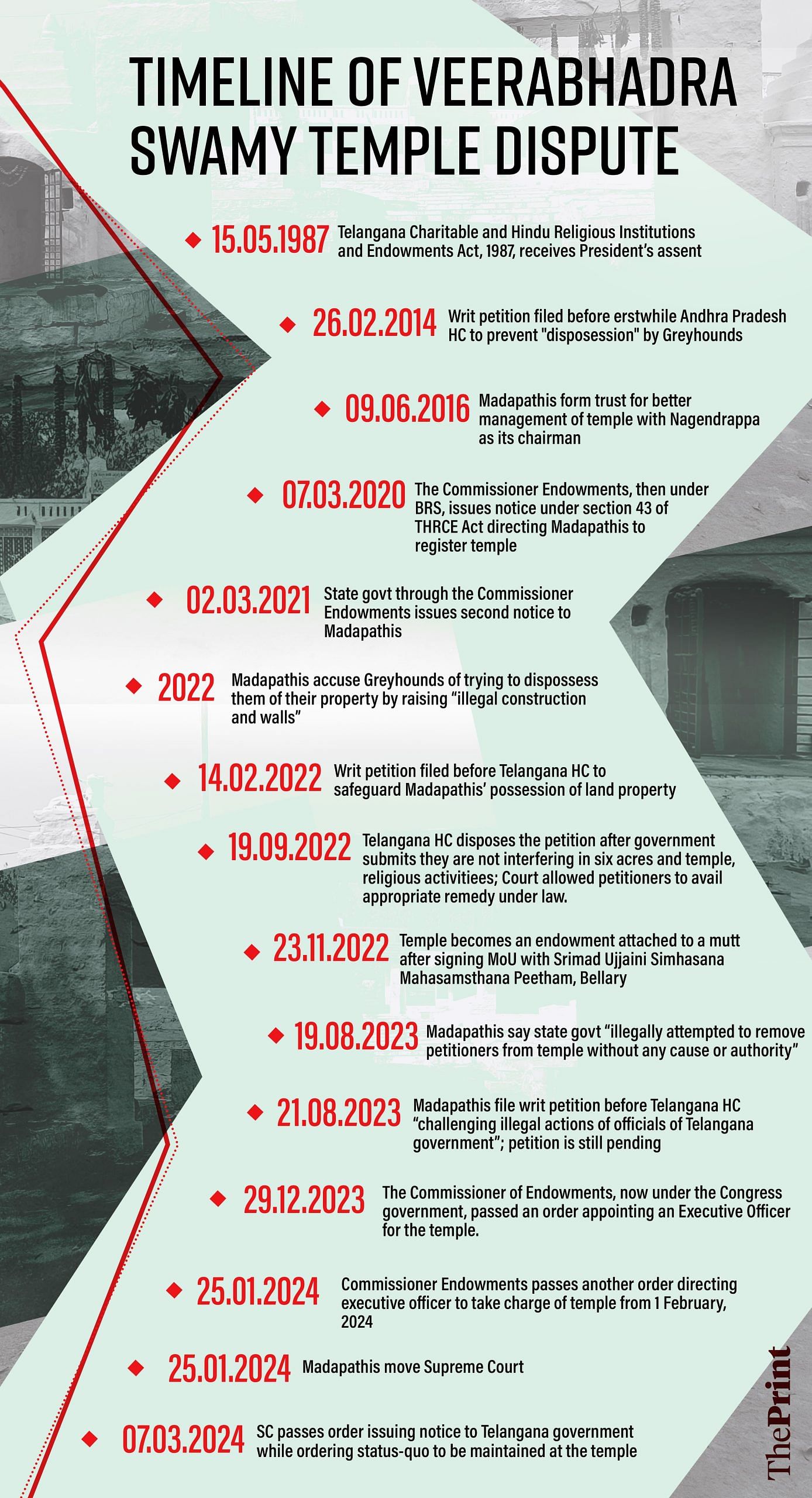
The Madapathis in their writ petition accused the Telangana government of “attempting to take over the Veerabhadra temple, thereby removing them and divesting them of their fundamental rights”.
The petitioners stated that the THRCE Act and orders issued under it are ultra-vires Articles 14, 25, 26, and 31A of the Constitution.
“Under said Act, the government has unfettered powers to supersede the administration of any temple and to replace the management of any temple with a board of trustees of their choice, run by an executive officer, under the directions of the government. This power can be exercised under the Act, without the need for any cause, or reason, in a completely arbitrary fashion,” read the writ petition filed before the apex court.
The petitioners submitted that the management and administration of a temple are an essential part of the freedom to profess, practice and propagate religion as guaranteed under Articles 25 and 26 of the Constitution. It also underlined that the court “has held it is not the job of officers of a secular government to run temples” — a reference to the apex court’s ruling in Pannalal Bansilal Patil vs State of Andhra Pradesh (1996).
It went further to cite the court’s ruling in Subramanian Swamy vs State of Tamil Nadu (2014).
“As per the law laid down by this Hon’ble Court, the respondent government is only empowered to take over the management and administration of a temple in order to cure financial maladministration, and then the management of the said temple is to be returned to the person concerned. It was held that supersession of management indefinitely would tantamount to violation of proprietary and fundamental rights,” read the writ petition.
‘Takeover of thousands of temples’
The Madapathis, in their 2022 writ petition before the Telangana High Court, stated that in 1875, the Nizam of Hyderabad had transferred the property (land) to their predecessors along with the temple for the purpose of puja, etc.
They claimed that their ancestors’ name appeared in pahanis (land documents) till 1951 but thereafter the parcel of land is shown as government land in state records.
The government had then responded by alleging that the petitioners intended to grab this land which was government property.
In turn, the high court disposed of the Madapathis’ petition saying they had failed to make a prima facie case establishing their possession of the said property. The court also noted that the Greyhounds were not interfering in the affairs of the temple in any way.
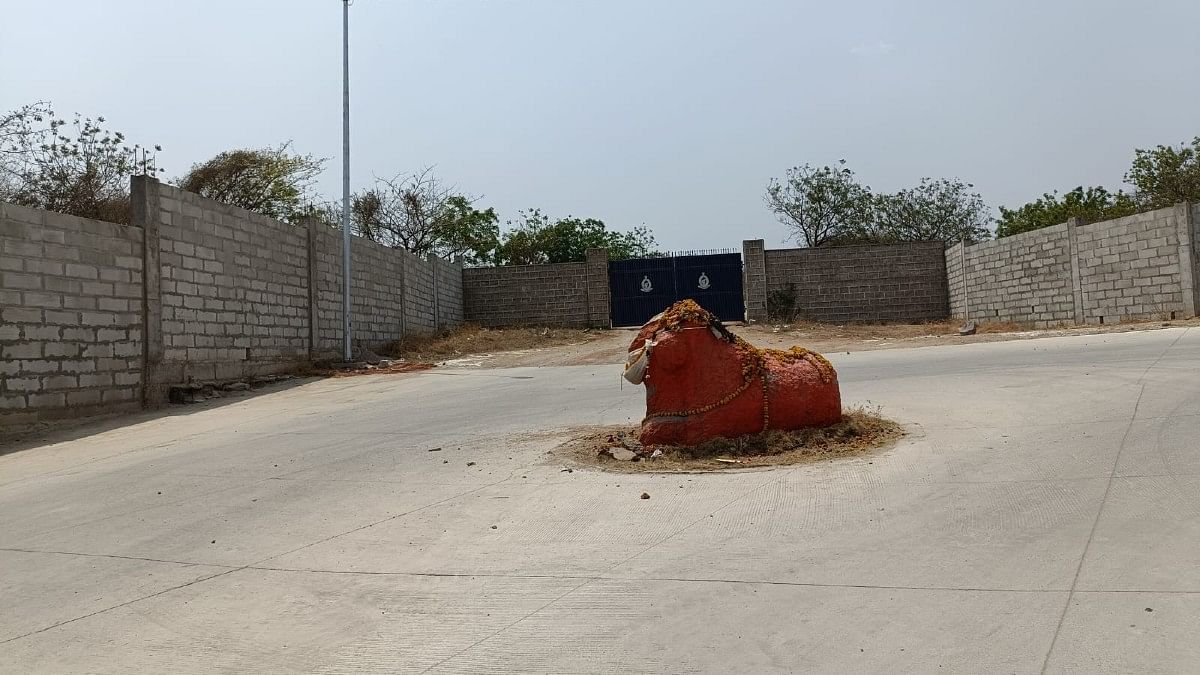
Notably, the Madapathis are not the only ones embroiled in a dispute with the Greyhounds over the 142-acre land area.
In August 2023, a Supreme Court bench in its verdict in a long, vexatious case upheld the state government’s decision to reclaim the land surrounding the temple which was, in the 1950s, assigned to some families from marginalised communities. In 1991, most of these assignees had fraudulently transferred their rights to a property dealer and the transgression came to light when the land was allotted to the Greyhounds.
The Supreme Court bench of justices Surya Kant and J.K. Maheshwari, had remarked that the land mafia was behind the litigation, and proceeded to pass directions giving full right to the Greyhounds to maintain possession of the land in question with a blanket stay on further litigations in courts over the land.
Asked about that case, Paramesh says, “We were not involved in that case.”
In the writ petition filed in the Supreme Court last month, the Madapathi family argued that despite the “clear and unambiguous pronouncements by the Hon’ble Court, the respondent government misused the provisions of the said act and appointed an executive officer to take charge of the temple without prescribing any cause, and in perpetuity”.
“Through the Telangana Hindu Religious and Charitable Endowments Act, 1987, the state government has arbitrarily and unconstitutionally taken over the administration, management and control of thousands of Hindu temples and Hindu religious institutions in Telangana. This taking over of Hindu temples by the government is in derogation of the right to freedom of religion enshrined in Article 25 and 26 of the Constitution, and ultra-vires Article 31A of the Constitution of India,” read the petition.
It added that in pursuance of the rights guaranteed under Article 25, all persons are free to set up and administer institutions of their choice for religious and charitable purposes and such institutions are liable only to be regulated by the government, and not controlled.
“It is submitted that taking over Hindu temples, and appointing government-controlled trustees, who are considered ‘public servants’ as per the act, to run and administer Hindu temples, by an arbitrary process by the respondent-government is unconstitutional, thereby affecting the fundamental rights of countless Hindus. The petitioner submits that there is an urgent need to rid these temples of unconstitutional and invasive government control,” argued the writ petition by the Madapathis.
It added that the Telangana government has from time to time issued rules, notices, notifications, circulars and orders under the THRCE Act, taking over absolute control of the management and administration of “thousands” of Hindu temples in the state.
“The respondent has been misusing the provisions of the act to divest the petitioners of their fundamental rights. The respondent has also created an extensive bureaucratic mechanism, headed by commissioner, endowments, with several bureaucrats working under him, at various levels to maintain deep and pervasive control over such temple’s affairs and wealth,” it added.
Unlike most temples, there is no hundi (donation box) inside the Machileshwarnath temple. Paramesh says the combined earnings of the Madapathi family, in the form of dakshina (offerings to priests by devotees), would be in the range of a few lakhs a year.
While darshan is free, the faithful visit the shrine to perform puja, dosha-nivarana and other rituals which bring dakshina.
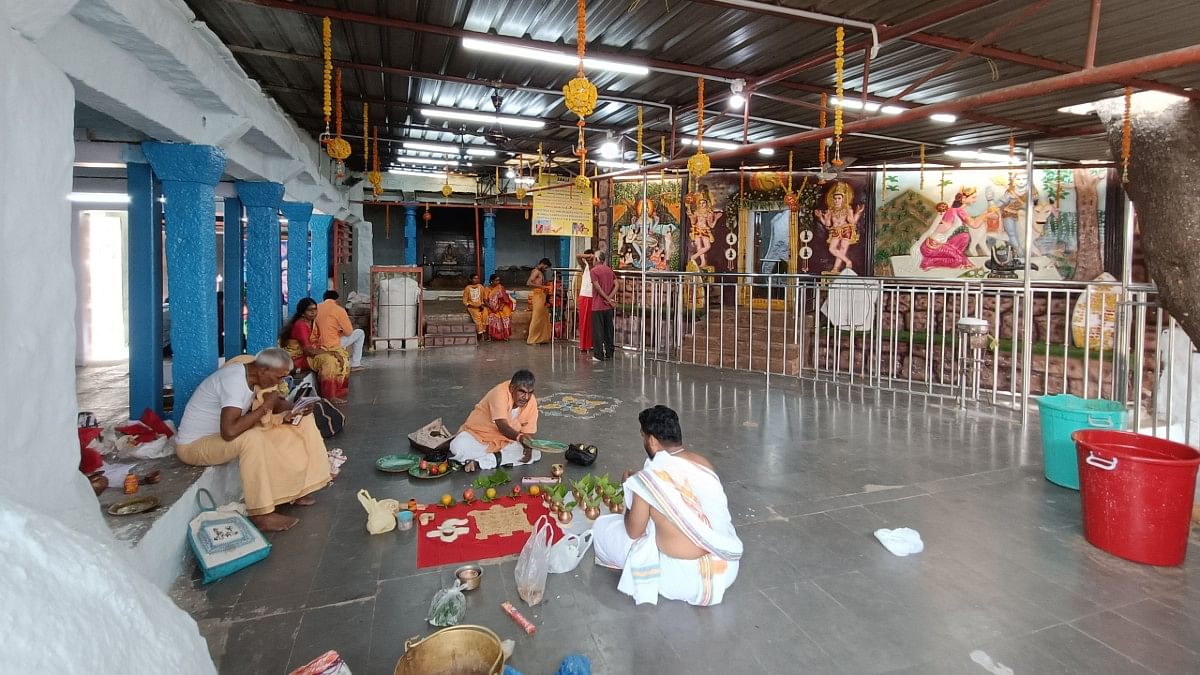
“The temple was developed and is being managed well by the family, and we want it to continue like that,” says Dandotikar Raju (about 50), a resident of Manchirevula village, who came to the temple with his family.
Borra Vinay (45), a private employee from Tolichowki in Hyderabad, adds that he visits the temple once a week for its peaceful surroundings. “Why can’t we have a public referendum on who should administer instead of the government citing some act and simply taking over,” he tells ThePrint.
(Edited by Amrtansh Arora)
Also Read: Karnataka Mutts offer a model for temple freedom. BJP raises the slogan but priests don’t


